Playlist;
Cantique de Noël (Minuit Chretiens) Enrico Caruso 4:12
Stars of Glory Dustin Christensen and Debra Fotheringham 2:45
December C.M. The Elastic Millennium Choir 2:40
God’s Love Made Visible Dave Brubeck & New York Voices 4:15
Music notes
Cantique de Noël (Minuit Chretiens) This is a 1916 recording by the legendary Enrico Caruso (1873-1921.) You may be more familiar with the English version of this French Christmas song – O Holy Night. I got this from an archival compilation CD called The Spirit of Christmas Past. You can watch and listen to a YouTube posting that I made of this song here.
Before I heard this recording, for me Caruso was a figure from the past about whom I had often heard about, but I had never heard his singing. When he recorded this at the age of 43 he was nearing the peak of his operatic career, but also only five years from the end of his tragically short life. His tenor voice was warming up as he grew older, gaining rich notes in the range usually occupied by baritones. That was perfect for the then-new recording technology before the invention of electric microphones, which basically still used the same recording technique that Thomas Edison had invented in 1877.
Singers sang into a large horn, and the vibrations from their voices were carved by a cutting stylus directly into wax or shellac which was then used to make a metal master for reproduction. The technology had many problems and did not really catch on commercially until various inventors improved on Edison’s format (and got around his patents) by recording onto flat shellac discs instead of hard wax cylinders, and found ways to reduce the manufacturing costs and ease of use for both the records and the gramophones needed to play them.
By the time of this recording, the Victor Talking Machine Company had outstripped Edison’s company in the marketplace, and Enrico Caruso was an important part of that story. In 1902, he was among the first major celebrities to be willing to participate in the new recording technology. He lived in Italy at the time but his recordings for Victor’s European affiliate “went viral” in both Europe and America and he was recruited to join the New York Metropolitan Opera.
Soon his name and fame were important in attracting other performers to the medium, and his exclusive contract with Victor featured prominently in the company’s marketing. He remained affiliated with the company until his death in 1921, with 260 recordings to his credit.
As you can hear, by 1916 acoustic recording did a pretty good job by the standards of the day with regard to the singer’s voice, although it could not do justice to the musician accompanists who were further away from the not-microphone horn. See here or here for more information about the era of acoustic recording. Admittedly, this song would not have sounded as good coming from an old Victrola. This recording benefits from newer technology that can digitize the signals and clean up scratches and recording “noise.”
This is perhaps the most famous Christmas song from France but it is quite unlike that country's traditional folk noëls. That is because it is relatively recent, written in 1847, and it did not originate as a noël folk song (which often got their melodies from traditional lullabies, milkmaid cow-soothing songs, or slowed-down drinking songs.)
Its words were written by an obscure amateur poet and the music was written by an acclaimed theatrical composer of light operatic works and ballets. Placide Cappeau, a wine merchant who lived in Rhône Valley, wrote them while on a coach ride to Paris, as a commission from his parish priest. By good luck, and only because of a letter of introduction from a high-placed mutual friend, he was able to approach the acclaimed professional composer Adolphe Adam for a setting for it.
At the time Adam was at the peak of his career after the success of his masterwork, the ballet Giselle. To Cappeau’s great surprise, Adam read his hand-written poem and immediately agreed to do it. He wrote this melody and arrangement to match the lyrics without any pretence to trying to make it sound like a traditional noël. That was a very brave choice at the time.
I don’t know if either the priest or the poet had any concerns that the famous composer was Jewish. Apparently the public didn’t because the song immediately became very popular in France. It soon attracted John Sullivan Dwight, a Unitarian minister who lived in Boston, to write the English version entitled O Holy Night that we are familiar with. His lyrics were entirely different from the French poem: not at all a translation. You can find a literal translation of the French lyrics here.
Stars of Glory This song comes from The Lower Lights’ 2011 album Come Let Us Adore Him. The singers are Dustin Christensen and Debra Fotheringham. The Lower Lights seasonal group, based in Salt Lake City, Utah describe themselves as:
… a gospel-folk collective that's diving into the Christian songbook– familiar hymns, lost gems, Hank Williams tunes, Christmas songs, and more. Drawing on equal parts reverence and celebration, The Lower Lights have landed on a sound that's part-revival, part-vigil, and steeped in tradition without drowning in it.
The poem that became the hymn’s lyrics was written circa 1850 by Frederic Charles Husenbeth, a Catholic priest who was born in England in 1796. I do not know where this melody for it comes from. It does not appear to be the same as the only one I found in online catalogues of hymns and Christmas music.
Stars of glory, shine more brightly,
Purer be the moonlight’s beam;
Glide ye hours and moments lightly,
Swiftly down time’s deepening stream.
Bring the hour that banished sadness,
Brought redemption down to earth,
When the shepherds heard with gladness
Tidings of a Savior’s birth.See the shepherds quickly rising,
Hastening to a humble stall,
And the newborn Infant prizing,
As the mighty Lord of all;
Lowly now they bend before Him
In His helpless infant state;
Firmly, faithful they adore Him
And His greatness celebrate,Hark the swell of heav’nly voices
Peals along the vaulted sky;
Angels sing, while earth rejoices:
"Glory to our God on high;
Glory in the highest heaven,
Peace to humble folk on earth;
Joy to these and bliss is given,
In the great Redeemer’s birth.
December C.M. (Shepherds Rejoice, Lift Up Your Eyes) This song and choral arrangement comes from a shape-note hymn book published in 1840, so it’s title is the name of its arrangement, not its lyrics. That hymn book is Union Harmony, compiled and published by Stephen Humbert, who drew from both British “west gallery” and New England “shape-note” sources.
Humbert was a royalist who had been forced to move to Canada after the American Revolution because he had served with the British militia during the war. Many royalists were expelled from the new United States nation during those times and moved to what is now Canada. Some moved to the existing towns on the east coast (that had been cleared of French settlers by the Acadian expulsions) or, if they could not afford to do that, took up the offer of free land on the western frontier in what was then called Upper Canada (but is now called eastern Ontario.) In Stephen Humbert’s case, he re-settled in Saint John, New Brunswick.
Although Humbert was a singing teacher and composer himself, this song was actually arranged by one of the more prominent west gallery composers in England, John Fawcett. Fawcett began his career as a shoemaker but he seems to be one of the few west gallery songsmiths who was able to establish a new well-paying career in music.
First he became choirmaster of a chapel (probably not a good-paying gig in itself) and played clarinet in the local militia, eventually rising to the role of bandmaster. Then he was appointed choirmaster at a bigger church in another town; a job that paid £20 per annum – not bad money in those days. That led to another promotion, moving to Bolton in 1825 and becoming a professor of music at the Victoria University of Manchester (now known simply as the University of Manchester.)
Fawcett’s arrangement December C.M. was a setting for lyrics written by Isaac Watts, from his Horce Lyrica, 1706. Composers never had to defend the theology of the lyrics that accompanied their arrangements if they came from him, and a lot of composers wrote arrangements for the poem Shepherds rejoice, lift up your eyes.
The C.M. indicates that it is in common meter which, according to Wikipedia is “… four lines that alternate between iambic tetrameter (four metrical feet per line) and iambic trimeter (three metrical feet per line), with each foot consisting of an unstressed syllable followed by a stressed syllable.” Song lyrics written in common meter (and there are a lot of them!) can often be set comfortably to any tune that is also written in C.M. Here is an example of a familiar Christmas song re-set to the common metre arrangment Sherburne.
This Christmas hymn is sung here by a quartet of members from the now-disbanded Elastic Millennium Choir and is from their 1997 album An Old Canadian Christmas, subtitled Songs to Beguile a Winter’s Eve 1790 to 1880. The quartet is comprised of Faye Armsworthy, Charles Banting, Kim Davison and Ditta Kasdan.
Shepherds, rejoice, lift up your eyes,
And send your fears away;
News from the regions of the skies;
Salvation’s born todayGo, shepherd, where the infant lies,
And see His humble throne;
With tears of joy in all your eyes,
Go, shepherd, kiss the Son.Glory to God that reigns above,
Let peace surround the earth;
Mortals shall know their maker’s love
At their Redeemer’s birth.Glory to God that reigns above,
That pitied us forlorn;
We join to sing our maker’s love,
For there’s a Saviour born.
God’s Love Made Visible Every year since 1985 (except for the Covid year 2000) Anne Phillips has produced an annual benefit event in Manhattan called Bending Towards the Light: A Jazz Nativity. This annual Christmas pageant composed, arranged and conducted by Ms. Phillips is staged every year by a varying cast drawn from some of the world’s greatest jazz artists. Click here for a brief history of the show.
The Christmas story is told in full costume with jazz musicians, singers and dancers in the roles of shepherds, angels, Mary and Joseph, and with the three kings being the star performers. Some of the musical numbers in the pageant change every year depending on who is in that year’s cast, with three of the biggest stars being the Kings. The finale of the show is always the Kings’ extended jam session on a well-known Christmas song tune.
The show has had an evolving cast of members over the years. This recording is from an album released in 1995 of excerpts from previous shows in the early years when the casts read like a Who’s Who of jazz legends. The core libretto combines well-known Christmas carols with original music by Anne Phillips, Bob Kindred and Dave and Iola Brubeck. I understand that it and the music are now freely available for jazz musicians in other places to put on this jazz Christmas pageant as a charitable fund raising events.
This song was written by Dave Brubeck, with lyrics by his wife Iola, and the arrangement is by Anne Phillips. That is Dave you hear as the piano soloist, and the New York Voices do the vocals.
Remembrance of this 2020 experimental series
For a few years I could see that the end of issuing my samplers on CDs was coming. Increasingly I was hearing from people that they could no longer conveniently listen to them. At first, it was because they no longer had a CD player, but they could still hear them from their computer or their car stereo. But increasingly, they had laptops or cars that couldn’t play them either and couldn’t listen to them at all. I knew when I made my 2020 sampler CD that it would be the last one, but what would replace it? I thought a lot about that while I was working on my sampler that year.
Many people suggested YouTube, Spotify or another streaming service playlist; but that wouldn’t be sharing my own collection of holiday songs, and a lot of musicians and singers who self-publish their albums are not represented there. So I would be limited to the ones that were on the streaming service, and only people who subscribed to that service would be able to hear my playlists. I, and I suspect many people my age, still have not adapted to music streaming. I perceived that I would have similar problems if I tried to do this as a podcast. (I still don’t listen to those either.)
By the time I was completing my 2020 CD and getting ready to mail them out I had decided that some sort of e-mailed musical advent calendar might be the way to go. I could choose a theme for the year and each day for a period preceding one of the major holidays (Christmas, Solstice, New Year’s Day or Hanukkah) I could send out a song/tune-of-the-day email along with information about it, similar to what I had been doing with my liner notes. Collectively they would constitute that year’s Sampler.
I had changed formats before - in 2001 going from cassette tapes to CDs - but this prospect was quite intimidating and I knew it would involve a lot of new learning curves. It was not until November 20 that I realized that since it was a Covid year and there would be no other gatherings (or opportunities to sell my CDs in person) to distract me, I could/should do an experimental test-of-concept. (Since I am a retired professional planner I should have realized that much sooner than I did!)
I began preparing to get ready by developing my playlist. Since I had just done my 2020 CD on the nativity theme I was familiar with those songs and tunes in my candidate files and I knew that I still had a lot of good ones. The initial plan was to find postings of the same renditions of my songs on YouTube if available, and to make my own YouTube postings where my rendition was not already posted there. I figured that just about everyone would be able to access YouTube, and it did indeed have a lot of good quality authorized recordings that had been posted by music producers or publishers (as well as privately-ripped ones.)
The second song on my draft playlist was already on YouTube. But to have my planned first one, the 1916 recording of Enrico Caruso singing Minuit Chretiens (which I really wanted to include) I needed to make my own YouTube posting. (You can see it, with its photos, here.) The time that it took to make it convinced me that even if I did not include photos that approach would be way too time-consuming for my last-minute experiment. I decided to attach MP3 files to my daily emails instead.
In the meantime I had been developing a list of about 50 people to whom I would send my daily dose of music. About half of those were people to whom I was sending my 2020 CDs to, and the other half were friends and acquaintances for whom I had email addresses, including some people who had been buying my CDs.
Here is the message that I sent to them on the last day of November:
“For over 25 years I have been I have been compiling “musical Christmas cards” each year, first as cassette tapes and then as CDs. I now realize that CDs are becoming obsolete and I'm thinking about what sort of media I will use in the future. I hope you don’t mind but I am including you as a potential guinea pig in a “test of concept” experiment. This is one of the approaches I might use -- an e-mail musical advent calendar. There will be one e-mail message from me each day if you choose to participate, with one song to listen to and (hopefully interesting) background information about it and/or its historical context.
I am sending this to a small but very diverse group of people drawn from my past e-mail correspondence on various topics. If you don’t want to participate please feel free to reply to this or any of the messages and ask to be removed from the mailing list. I will do so immediately. I would appreciate hearing why you do not want to continue to participate, as feedback related to this test project, but that is neither required nor even expected. (After all, I didn’t ask you in advance to be a guinea pig did I?)
I know that pile-ups in-boxes can become overwhelming, especially at this time of year. People’s interest in receiving one-song-a-day messages about seasonal music at this time of year is one of the things that I am testing out. Also, there are any number of other reasons that this format, or the types of songs that I am featuring this year, may not appeal to everybody’s tastes.
The theme this year will parallel this year’s Bill’s 2020 Christmas Music Sampler CD that some of you will be getting within a few days – songs and carols about the Nativity story presented in a great variety of musical styles. While the theme is similar to this year’s Sampler CD but the song selections in this “Musical Advent Calendar” will be different.
The purpose of this pilot project is to find out whether my own abilities enable me to do this well and consistently, and if it produces satisfying results for the participants. That is where you come in. This is a pilot project. If the spirit moves you, I would appreciate feedback at any time about how enjoyable you are finding this one-a-day series to be; suggestions as to how I could make it better; and anything else that you want to tell me.
No one asked to be removed from my mailing list, and many people were indeed good about giving me feedback. I quickly found out that my e-mails were being considered to be junk mail either by peoples’ mail services or because of the junk mail parameters that recipients had set for their mail apps. I needed to advise several people individually how to get my mail-outs through their junk mail filters, and on Dec 3 I sent my mailing out to everyone in very small batches along with those instructions.
By the next day I had decided that direct mailing from my own account was definitely not feasible for the long term, and throughout this experiment there were other technical glitches, such as people not receiving their daily message for unknown reasons and I had to repost it to them. There were one or two of those every day, continually confirming that I had to do something different.
I asked my daughter Wendy, who owns an independent movie theatre and was then sending out her playbill as a weekly newsletter to about 2500 people, about the feasibility of me using MailChimp for this That is the mailing service that she uses. But for various reasons that service would not have been useful for this project however I think that she was the one who suggested I look into Substack. Substack can have musical “attachments” (which are really links to a hidden podcast so the musical data is not part of the message.) And better yet, unless the sender charges a subscription fee it is free, and the send-outs can remain posted in a blog/archive (and found by search engines) indefinitely.
I included periodic progress reports in some of my daily mailings, and the suggestions for improvements kept coming in. For example, I learned that people loved getting photos related to the performers and the other things that I discuss in my write-ups. I enjoy chasing those down too (and the only thing that keeps me from doing that this year is a time constraint.)
On my own I learned that the song-of-the-day concept was too limiting and that I missed combining songs together – that is fun and it really helps when I want to discuss the music’s historical or cultural context. I also found that without the discipline imposed by the space limit of having to fit my liner notes into a small booklet I tend to get carried away with the research and writing side of things. As you have seen for yourself, I still haven’t resolved that issue.
I also figured out on my own that a year’s collective sampler doesn’t necessarily need to have a theme. In such a series I can send out secular silly songs as well as reverential nativity ones all I want, as long as post them on different days.
By Dec 6 of this experiment, I was usually posting two or three related songs together each day, creating sets that ranged from 4 to about 8 minutes long. That, of course, increased the research/writing and photo-finding time, but I got good feedback about the extra music (although the larger music file size might have been the source of the problem with mysterious lost messages.)
The fact that I began this project impetuously very late, and with mushrooming content, meant that within a few days I was always working on the very next day’s mail-out, and was working very late into the night to get people’s songs-of-the-day into people’s mailboxes before they woke up. Many of them were mailed after 2:00 or 3:00 in the morning, and the latest one was at 5:24am. (All of this year’s get sent between 1:00 and 2:00am, but that is because I schedule them that way in advance.)
The bottom line is that this 2020 test-of-concept project was very challenging and stressful, but I also remember it as having been an exciting time during the Covid year when I otherwise probably would have had a rather sad Christmas and Yuletide season. And I certainly look back with appreciation that I did this “extra” experimental sampler that year rather than have all this learning to do as part of releasing a proper annual sampler.
Here is the full list of songs and tunes sent out in this experimental 2020 edition:
Dec 1 Cantique de Noël (Minuit Chretiens) Enrico Caruso
Dec 2 Golden Cradle Emmylou Harris &and Nancy Ahearn
Dec 3 Stars of Glory D. Christensen & D. Fotheringham of The Lower Lights
Dec 4 Sing Ye Forests & Sing Ye Seas The Overman Family
Dec 5 While Shepherds Watched (Cranbrook) Psalmody & The Parley of Instruments
Dec 6 While Shepherds Watched & tunes from the Hardy MS Mellstock Choir and Band
Dec 7 Carol (Supply Belcher) and Sherburne (Original version) Nowell Sing We Clear
Dec 8 Three Great Ships Winter Harp
Dec 9 God’s Love Made Visible Bending Towards the Light Dave Brubeck & New York Voices
Dec 10 Susanni musica intima and Ding, Dong, Merrily on High Le Voix Humaines
Dec 11 Carol of the Birds (Australian) Colin Buchanan; National Boys Choir
Dec 12 Salzburger Adventsingen medley pre-1976 cast members
Aus Einer Schönen Rose Riederringer Sänger
Jodler aus dem Alpenland Riederringer Sänger
Göttliches Kind Familie DerschmidtDec 13 A Trapp Family International Medley The Trapp Family Singers
Dec 14 Follow That Star and In Dulci Jubilo St. Agnes Fountain
Dec 15 Baby King Kathy Mattea
Dec 16 Nautical Christmas Trilogy
Mariner’s Hymn The Johnson Girls
Sailor’s Carol Johnny Coppin
Now the Day is Over Shawn ColvinDec 17 Brightest and Best Kathy Reid-Naiman and
Bright Morning Stars Are Rising Elizabeth MitchellDec 18 Three by Billings
Bethlehem The Western Wind
Boston (first verse) The Western Wind
Shiloh Taverner ChoirDec 19 Herald Angels and December The Elastic Millennium Choir
Dec 20 Three songs from The Sacred Harp
Raymond The Tudor Choir
Fulfillment Boston Camerata
Milford The Tudor ChoirDec 21 Still Water and Jesus the Light of the World The Rose Ensemble and
Dec 22 We Three Kings The Sackville All Stars
Dec 23 Singing in the Land & bonus fragment Denis Donnelly and friends
Dec 24 Tomorrow Shall Be My Dancing Day and Melima Maddy Prior
Dec 25 Chariots John Kirkpatrick and Wassail! cast
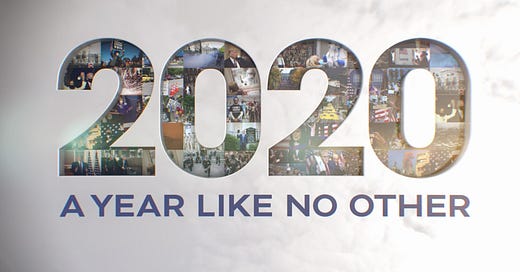


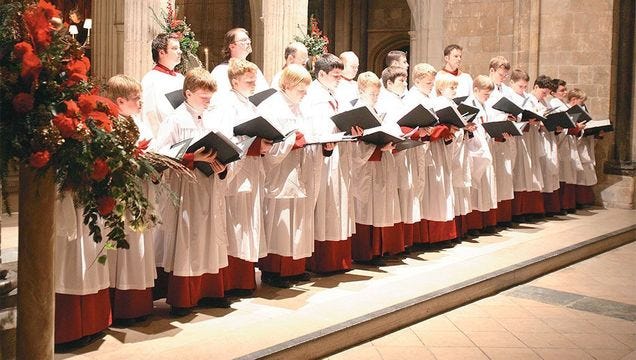




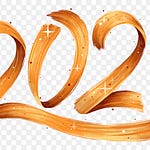
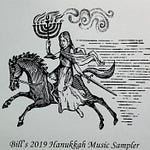
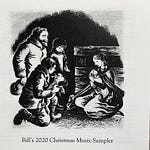

Share this post